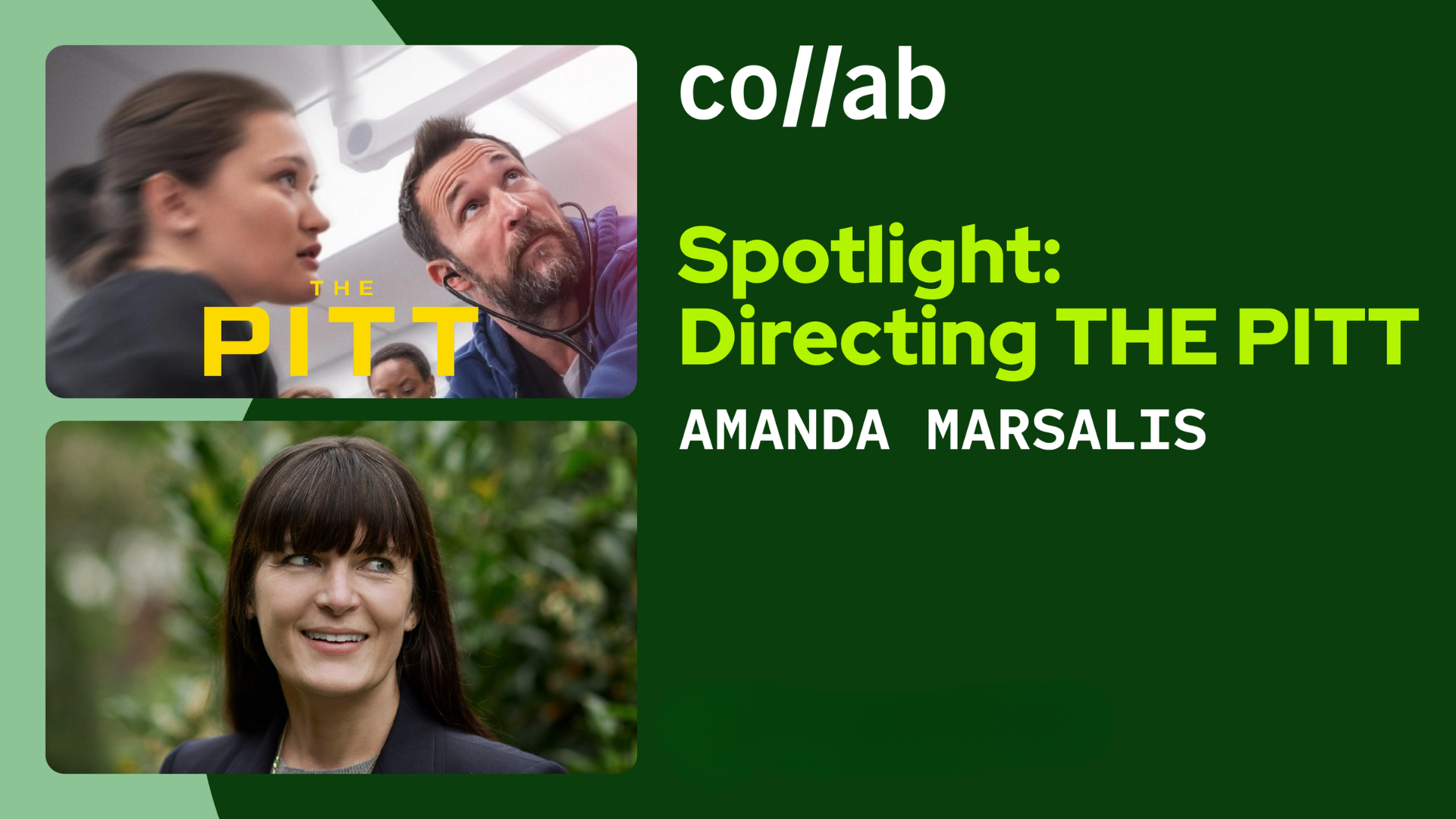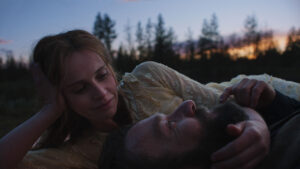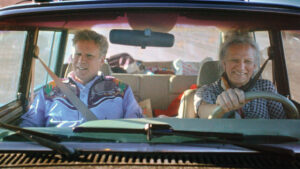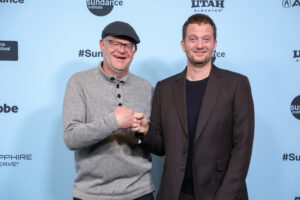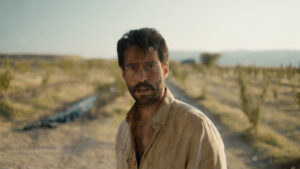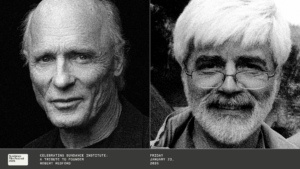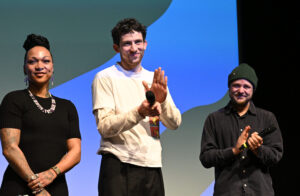By Jessica Herndon
When it comes to high-stakes television, few shows have captured the intensity and heart of trauma medicine quite like The Pitt. HBO Max’s breakout medical drama has become a critical sensation, earning 13 Emmy nominations, including a nod for Outstanding Drama Series and Outstanding Directing for a Drama Series for Amanda Marsalis, who helmed the gripping “6:00 P.M.” episode of The Pitt, which focused on a mass casualty situation following a shooting, as well as three other pivotal episodes in the show’s debut season.
With its exceptional ensemble cast, led by Noah Wyle and Katherine LaNasa, The Pitt is an emotional rollercoaster that pulls viewers into the relentless pulse of an emergency room in Pittsburgh. Created by ER alum R. Scott Gemmill and executive produced by John Wells, the show highlights the daily struggles of its medical staff as they navigate life-or-death decisions while dealing with their own personal battles.
In a special Sundance Collab discussion titled Spotlight: Directing The Pitt with Amanda Marsalis, Marsalis offers an intimate look into the creative world behind The Pitt. Known for her sleek and edgy visual style — a signature that emerged from her teenage years photographing punk shows — Marsalis brings a unique energy to the series. Her work on The Pitt is a blend of raw realism (yes, she does a deep dive into medical scenarios with real doctors for accuracy) and visual flair. Through her lens, Marsalis pulls viewers into relentless medical crises and personal drama, crafting a world where chaos and compassion collide.
In the chat, Marsalis shares her approach to capturing intense moments in a high-stakes medical environment, working with an ensemble cast, and how she prepares before stepping on set.
How directing The Pitt, which depicts one hour in real time, differs from other episodic television Marsalis has directed.
Honestly, it presented less challenges because we shot the show basically in order. The only thing that you would do out of order is maybe if you were in a trauma room, you might stay in. Like if you were going to leave and come back, you might, might stay. But most of the time we didn’t.
And then the other thing is going to the exterior ambulance bay. We would do those [scenes] all at once. In that way, it’s actually — incredibly easy is not the right word — but consistent. The major challenge was, honestly, for the actors to have the same haircut, [not] gain or lose weight. So, don’t go to the gym more or less. Don’t get a sunburn. Don’t get a new tattoo.
On her approach to directing the intense, large scale episode titled “6:00 P.M”, which focused on a mass casualty situation following a shooting.
[Episode] 12 was such a technical episode and such a huge episode that my thing was, I had to make sure that we still felt feelings. We had so many long conversations about all the technical aspects of it and what wounds we were going to see and when that was going to be needed and all of the aspects of what it would take to have one of those things happen in a hospital.
But really, the whole point is showing how emotionally devastating it is. And that was my guiding light through that episode.
On her visual approach on such an immersive series.
I am such a camera-focused director that I often warn people, “I’m going to have a lot of thoughts and a lot of notes, and I’m going to be very specific.” In general, I would say that goes over very well for me. I am very good about talking about camera, talking about shots, how something should land. This could go over here. We would do passes where I would go like, “Okay, we’re in an emergency. This is a Robbie [Noah Wyle] pass. Whatever’s Robbie’s doing, seeing or feeling, that’s what you want to focus on.”
On how she prepares for shoot days.
I have all my little systems, little things that make me comfortable, like I have my tea, water, snacks, my Japanese pen, my notebook, my script with all my tabs and little notes. I always break down my script. It just really helps how it sticks in my brain.
I always have another outfit in my car just in case I spill on myself. And I’ll change my socks at lunch and bring a toothbrush and toothpaste so I can brush my teeth after lunch so I can feel fresh and good. And I have my lotion that I like. I mean, it’s just all these little things so I don’t have to ever be uncomfortable so that I can focus on my job.
[On set] myself and my AD read the script and walk it, and go, “Okay, so-and-so is going to go here, this is going to go here. I’m going to want this person in the background over there. Oh, let’s change this. So-and-so is in this room instead of that room because that’s going to work better.”
Something that was awesome about The Pitt is that they designed the set before they started writing the show so that they understood the geography of where everyone was, and they wrote for the set, which is, again, brilliant. Your prep is about understanding the emotion that you’re going to need.
And then, for episode 12, which was where the mass casualty starts, our production designer built a model of the set, and then we had all these tiny little beds, and we numbered them all. And then we just prepped placing. It was like a dollhouse, basically. And we’re like, okay, in scene number 22, this yellow zone is going to be here. Pink numbers are there. This person moves out here. It’s just all math.
On her process for getting the emotion she needs when directing a scene.
That is very actor dependent, right? All actors need different things, and it’s your job as a director to pay attention. Like, this actor likes to chitchat about their personal life in between takes. Or this actor likes to be quiet in a corner. This one likes a lot of notes and affirmations. Sometimes an actor just wants a technical note. It is about reading the room and having an instinct and a sense. I think that’s just something that you get from experience. The more you do it, the more you know.
I’m such a better director now than I was five years ago. And that’s also [because of] generous actors like Laura Linney. Laura once was like, “You cut too soon.” And I was like, “Got it. Will never happen again.” She’s like, “Just, let it breathe.” And now I’ll let an actor leave a scene before I cut a scene.
On the aspects of making The Pitt that are unique to its production.
The Pitt has its lighting built into the set. So, the actors come on and the ride has already started. We all basically stand in a circle and everyone says their lines, and then I go, “Okay, let’s start talking about blocking.” I always try to invite actors [into the process]. I never tell people, you’re going to be here, you’re going to do this, you’re going to do this. I say these are my hopes and dreams. This is what I planned when you weren’t here. And let’s see if it feels right, because they are responsible for bringing it to life.
And then as soon as we’ve blocked it and rehearsed it, cameras are up and we’re going to start filming. The Pitt is all day, every day. It’s a marathon. It’s really fun. And we wrap on time.
Her best advice for directors interested in working in episodic — particularly high pressure, technically demanding genres.
Directing is that delicate balance of being in control on the set, making sure the actors and the crew understand that you have a plan, that you know what you’re doing, [and] that you have a vision.
The thing to understand is being a guest director in television is entirely different from directing your own movie. When you’re directing a movie, it’s very much like everything that you want, everything that you need, and everybody is there to support your vision. Being an episodic director, you are there to support the showrunners vision.
Advice on how to prepare to be a director if you don’t go to film school.
Well, I didn’t go to film school. I think the best way is just make your own things — use your iPhone, get your friends, make stuff. Because what’ll happen is you’ll have a plan, you’ll shoot a scene, and then you’ll go to edit it and you’ll go, “Oh, I should have done this.” And you really don’t know until you go to edit. But you learn quickly. So, I’ll be shooting a scene, and before I wrap it, I’m kind of like, “Okay, I’m gonna open here. I went there. That happened at the end. I got it.” But then sometimes I’m like, “I’m missing this.” I’m willing to embarrass myself on set in front of my crew over getting into an edit and being like, I don’t have what I need because that is the worst. But you don’t know it until you’ve done it. So, just go make shit.
To find more on-demand recordings, head to our video library. And for the latest on our events and online courses in TV writing, screenwriting, directing, producing, and documentary filmmaking, sign up for a FREE Sundance Collab account and subscribe to our newsletter.





